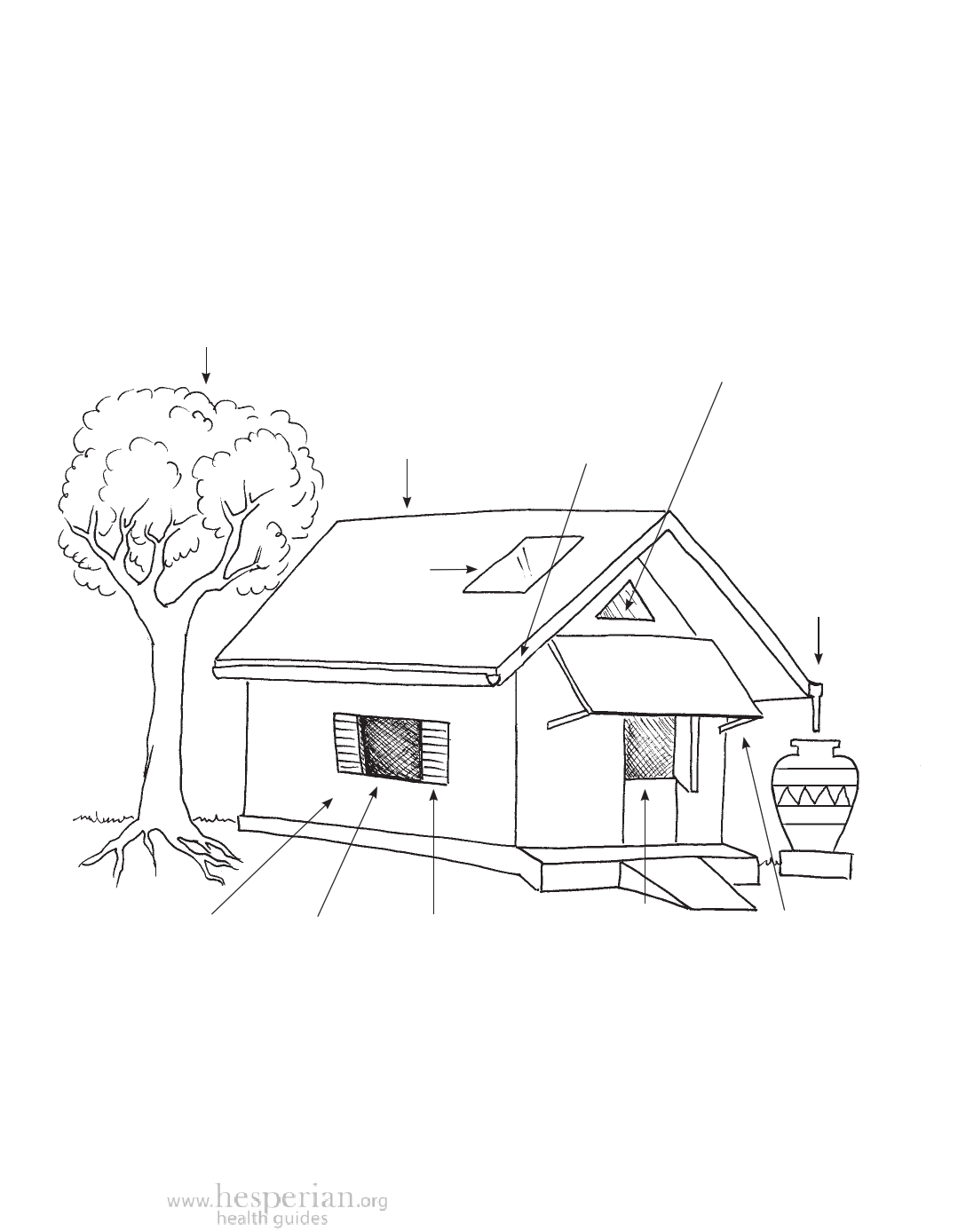
Building a Healthy Home 377
Building a Healthy Home
Homes designed with care contribute to communities that are safe and healthy.
Putting a house in a place that takes advantage of sun and shade can help
with heating, cooling, lighting, and ventilation. Choosing building materials
right for your climate is also important.
Trees provide
shade and beauty.
A good roof should
keep out water
and have a slope or
drainage canals to
carry water away
from the walls and
foundation.
Insulation in
walls and ceiling
keeps the house
warmer in cold
weather and
cooler in hot
weather.
A clear
panel in the
roof allows
daylight in.
Vents at each
end of the roof
allow fresh
air to enter
and stale air
to leave, and
prevents mold
and rot.
A gutter and
downspout
attached to the
roof can catch
rainwater and
direct it into a
cistern.
Windows on
both sides
of the house
improve
ventilation.
Screens on
windows
keep
insects out.
Shutters on
windows block
out sun, rain,
and wind, and
help keep heat
inside.
A split door
provides
ventilation
while keeping
animals out.
A shaded
porch provides
additional
living space.
A foundation and platform provide stability and protection from dampness, flooding,
and pests. Platforms can be built with a ramp instead of a step, making it easier for
children, the elderly, and people with disabilities to get in and out of the house.
A Community Guide to Environmental Health 2012